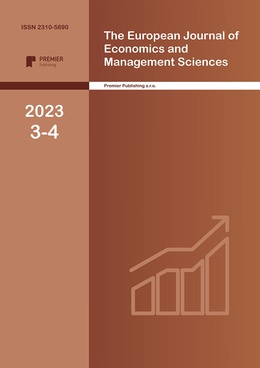On the relation between the readiness frontier technologies index and ISO 9001:2015 standard index
Authors
Enriko Ceko, Reis Mulita

Share
Annotation
Improving life quality is necessary for humans to use technology and standards in all of their activities. The primary goal of this research was to determine the relationships between the readiness frontier technologies index and quality management. This was accomplished by conducting a regression analysis between the readiness frontier technology index and the ISO 9001 Index to compare Hypothesis H1 (no relationship between the RFT Index and the ISO 9001 Index) to Hypothesis H0 (strong relationship between the RFT Index and the ISO 9001 Index). The study discovered that, while humans strive to better their quality of life, there is no link or association between readiness frontier technology and quality management (as expressed primarily in ISO 9001:2025 standards). The research concludes that all interested parties, individuals, public and private institutions, decision-makers, and civil society should look forward to improving life quality by applying quality management principles and ISO standards as efficient and effective tools, combined with technology usage and that all parties should look forward to building relations and connections between RFT Index and ISO standards, which are currently lacking.
Keywords
Authors
Enriko Ceko, Reis Mulita

Share
References:
- WHO. 2015. "WHOQOL: Measuring Quality of Life". World Health Organization.
- Gregory, Derek; Johnston, Ron; Pratt, Geraldine; Watts, Michael; et al., eds. June 2009. "Quality of Life". Dictionary of Human Geography (5th ed.). Oxford: Wiley-Blackwell. ISBN 978-1-4051-3287-9.
- Martha Nussbaum and Amartya Sen, ed. 1993. The Quality of Life, Oxford: Clarendon Press.
- Barcaccia, Barbara. 4 September 2013. "Quality Of Life: Everyone Wants It, But What Is It?". Forbes/ Education.
- Bottomley, Andrew. 2002. "The Cancer Patient and Quality of Life". The Oncologist. 7 (2): 120–125. doi:10.1634/theoncologist.7-2-120. ISSN 1083-7159. PMID 11961195. S2CID 20903110.
- UNCTAD. 2022. Technology and Innovation Report. https://unctad.org/tir2023. Visited on 3rd July 2023.
- https://www.iso.org/sdgs.html. Visited on 3rd July 2023.
- Sergio Mujica, ISO Secretary-General. https://www.iso.org/sdgs.html. Visited on 3rd July 2023.
- Contributing to the UN Sustainable Development Goals with ISO standards. International Organization. for Standardization. ISO Central Secretariat. Ch. de Blandonnet 8. Case Postale 401. CH – 1214 Vernier, Geneva. Switzerland. iso.org. ISO, 2018. ISBN 978-92-67-10790-5
- Rose, Kenneth H. Project Quality Management: Why, What and How. Fort Lauderdale, Florida: J. Ross Publishing. p. 41. ISBN 1-932159-48-7, 2005
- Ceko Enriko. 2013. Quality management tools. Monographic.
- ISO Survey Executive Summary. 2014
- Ceko Enriko. 2022. A new approach to evaluate the index of ISO 9001. Socioeconomic Challenges, 6(3), 5-22. https://doi.org/10.21272/sec.6(3).5-22.2022. chrome-extension://efaidnbmnnnibpcajpcglclefindmkaj/https://armgpublishing.com/wp-content/upl. Visited on 3rd July 2023.


